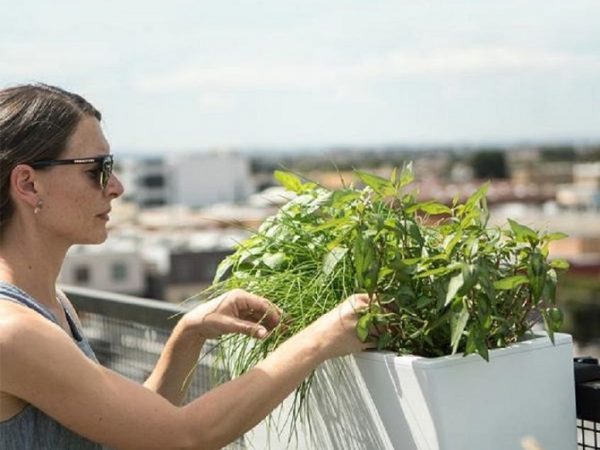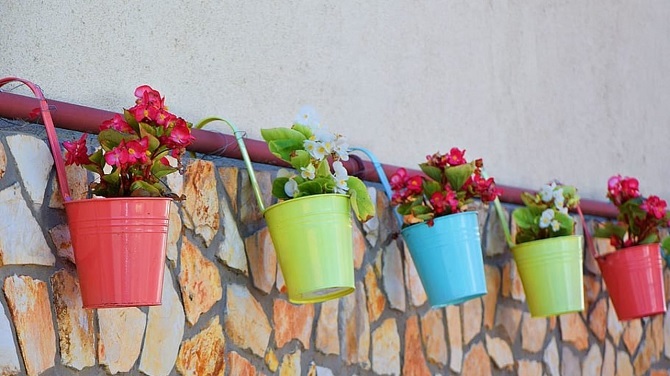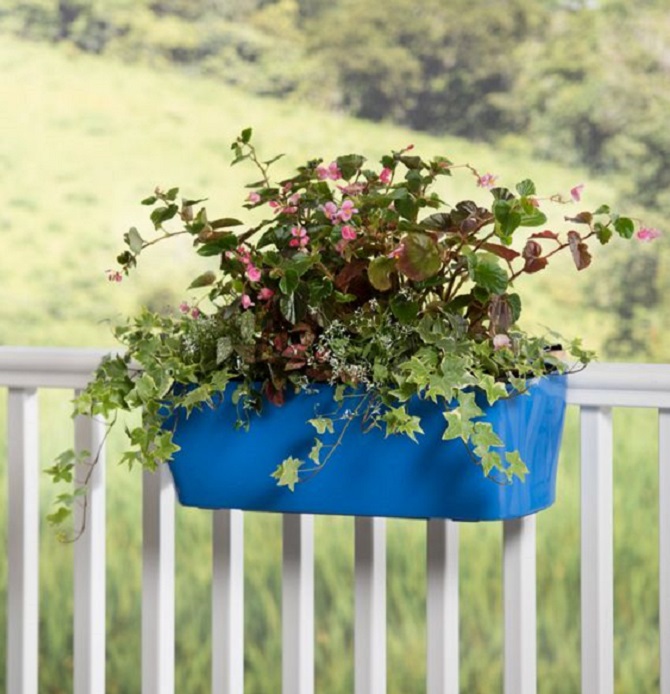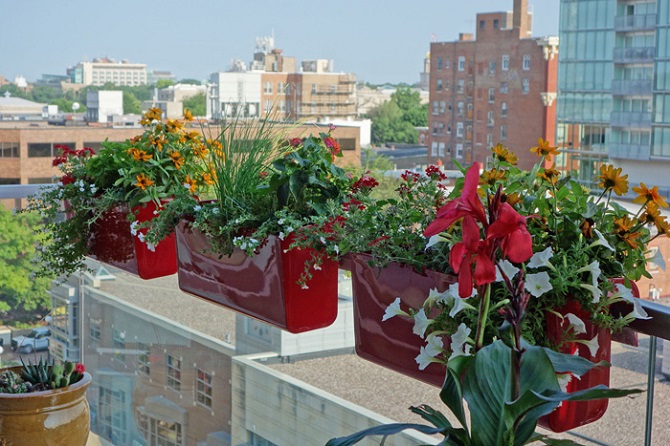29
Oct

Big or small, freestanding or hanging on the wall, self-watering balcony planters not only look great, but they also offer many benefits you’ll love. If you’re an avid gardener, then you most probably always look for small hacks to save you a bit of time. This is exactly what self-watering planters will do, allowing you to water your plants much less often and helping you grow happy, healthy plants.

Source: Athomemum
A self-watering planter is a pot or a container for your plants, but not an ordinary one. This planter has a reservoir also called outer pot or water storage tank that collects water at its bottom. It uses a wicking system, known as capillary action, to provide water from the reservoir to the plant’s roots. What you have to do is only fill up the water storage tank. Whenever the soils dry out, water from the reservoir is pulled up to the plant’s roots.
In this way, self-watering balcony planters look after themselves without your constant attention. Maybe once every week you’ll need to check on the water level from a viewing window or float and refill if necessary. The reservoir refill can be done through a vertical pipe for pouring in water from above, or through a side opening of the container. In whatever way, this is a great advantage that will make your gardening a lot easier.

Source: Pinterest
– Preventing Root Rot
Most plants don’t do well in soggy soil, and excessive water may cause a condition called root rot and other deadly diseases. Even if your plant does survive root rot, you’ll usually have to cut a lot of roots and leaves just to give it a fighting chance for life.
It may get you thinking that excess water from a self-watering container will do just that. But it’s exactly the opposite. These planters have an overflow hole that empties accumulated water ensuring plants never get more water than they need. And since outdoor plants are at most risk from soggy soil due to rain, self-watering balcony planters are a great way to protect your plants.
– Providing Efficient Use of Water
If you’re very conscious about your water consumption both for your in-house life and outdoor plants, then the last thing you want is wasting any water. In this scenario, self-watering planters are right for you because they use the minimum amount of water that’s necessary for the plant to thrive.
Also, water delivered via self-watering planter goes directly to its final destination, which is the plant’s roots, without being diverted on the way or evaporating into the air. When using a spray bottle or watering can you have less control on where you send the water, and most often it ends as waste.
– Balancing the Moisture Levels
When the plant absorbs water from a self-watering planter, it’s opposite from traditional watering. This way, water comes to the soil from its bottom, which is incredibly helpful. This method makes sure water is delivered to the plant’s roots and moisture is spread evenly.
– Improving Plant Health & Lowering the Risk of Fungal Disease
Watering the plant’s roots directly from the bottom has another great benefit, and that is better overall plant health. Self-watering planters also enhance healthy root growth, as the plant root stretches down to reach the water, rather than to grow parallel with the surface.
The biggest plant care mistake we tend to make is over-watering, which starves the oxygen from a plant leading to many harmful effects. With traditional watering, water may get to the leaves as well (although you aim for the roots). If the leaves get water continuously, it may result in developing fungal diseases. Choosing a self-watering planter will keep your plant’s leaves dry, leaving it happy and healthy.

Source: Blog.gardeners.
With multiple benefits and endless design possibilities, these planters can be an elegant and low-maintenance solution for your garden or balcony that’s perfect for today’s busy lifestyle. If you want to be able to bring your plants or herbs inside in the future, then think wisely and pick a model that can perfectly complement your patio, as well as your interior living space.